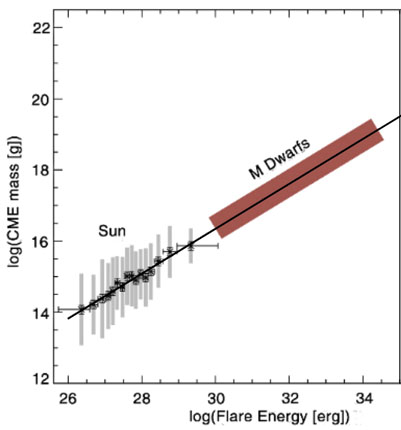|
The
concept of life hopping from planet to planet, from one star system to
another, may be as old as humanity’s interest in the stars — 25
centuries ago, the Greek philosopher Anaxagoras named this notion panspermia.
The ancients imagined creatures much like us making great voyages across the skies. But after telescopes revealed
the nature of outer space and microscopes revealed microorganisms,
modern panspermia proponents promote spores drifting through space,
ultimately landing on a habitable planet, and seeding life.
The
discoveries of 4000+ planets beyond our Solar System, and of objects
from other star systems entering ours, such as ‘Oumuamua, sparked
renewed interest in panspermia.
Four
astronomers, R. Gobat from Chile, S. E. Hong and S. Hong from Korea,
and O. Snaith from France, hereafter GHHS, analyzed panspermia in model
galaxies similar to our Milky Way. Their presentation is certainly more
“scientific” than those of ancient philosophers, but many critical
numbers remain highly speculative.
GHHS list these essential steps for panspermia:
1) Life develops on a habitable planet
2) Meteor impacts eject surface matter with viable spores
3) Spore-bearing matter is ejected from host star system
4) Spores survive in outer space for a sufficient time
5) Spore-bearing matter captured by new star system
6) Spores land on habitable planet and seed new life
The
simplest process may be #4. GHHS cite brief lab studies of spores
shielded within inorganic matter. Extrapolating these studies many
orders of magnitude, GHHS conclude spores might survive 1 million years
in the hard vacuum, extremely low temperature, and harsh radiation of
interstellar space.
GHHS
present extensive calculations for several of the 6 essential
processes. In the absence of reliable data, they are forced into many
debatable, simplifying assumptions. Ultimately, they concede that
definitive answers do not exist for any of the 6 processes. They hope
their analyses can highlight trends.
The
GHHS assumption I most object to regards the habitability of planets
orbiting M dwarfs (aka red dwarfs). Despite the fact that a great many
other factors are essential for life, in the parlance of most
astronomers, “habitable” merely means a planet’s surface temperature
might possibly sustain liquid H2O.
Recent
enthusiasm for “habitable” planets focuses on M dwarf systems, since
these are the most common — 50 of the 60 stars nearest our Sun are M
dwarfs, as are an estimated 75% of all stars in the Milky Way.
Due
to their low mass, M dwarfs radiate very little light, so their
“habitable” zones are extremely close to the star. Trappist-1, for
example, has three planets in its “habitable” zone that orbit 21, 26,
and 34 times closer to their star than Earth does to the Sun. Proxima
Centauri b, another favorite, orbits 20 times closer than Earth. Thus,
the stellar radiation these exoplanets receive is 400 to 1100 times
greater than they would receive in an Earth-sized orbit.
Unfortunately
for potential life, M dwarfs have frequent, intense flares and CMEs
(coronal mass ejections). As this log-log chart shows, M dwarfs
radiate 1000 times more CME mass and 100,000 times more flare energy
than our Sun, on an average basis.

The
closer orbits and greater stellar activity mean planets in the
“habitable” zones of the most common stars can be exposed to tens of
millions of times more hazardous radiation than is Earth. Those intense
radiation spikes, even intermittently, can sterilize a planet’s surface
and erode its atmosphere.
GHHS
address this by modestly increasing the average luminosity of M dwarfs,
which masks this critical issue. Spectacular flares, lasting 1 week and
occurring every 1000 years, could well preclude life, whereas
increasing the average starlight by 1 part in 52,000, which GHHS say is
equivalent, has no meaningful effect.
GHHS
do not quote individual numerical estimates for each essential process,
but do claim the probability of life from one habitable planet reaching
another habitable planet within a spore’s lifetime is 1 in a million.
GHHS arrive at the following conclusions:
1)
Panspermia is most likely near the galactic core, where star density is
greatest, and is much less likely far from the core
2)
Habitability is less likely near the galactic core, which has the most
hazardous supernovae, and becomes more likely far from the core.
3)
The probability of life developing independently on a planet seems much
higher than the probability of it being seeded by panspermia.
If their last conclusion is valid, the answer to how inert chemicals become alive is not in our stars.
Best Wishes,
Robert

January 2022
Note: Previous newsletters can be found on my website.
|